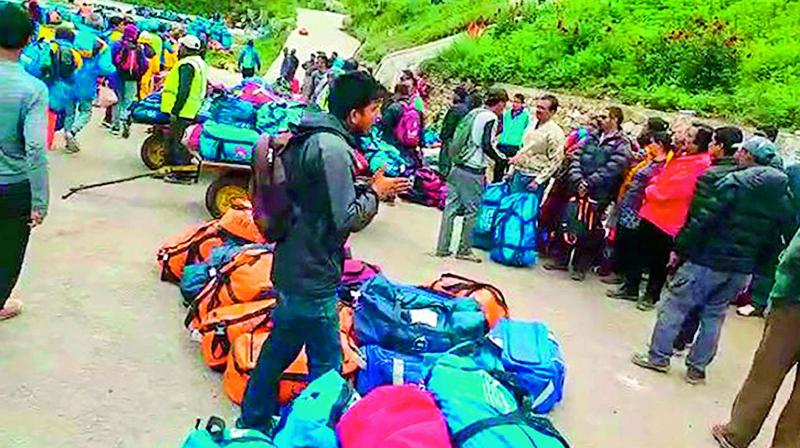The journey of a lifetime
Freezing temperatures, rugged terrains, dangerous trekking trails and high altitudes are also part of the yatra.

The Kailash-Mansarovar yatra, considered to be the ultimate pilgrimage, is not a journey to be taken lightly. Though it is said that you can go only if you get the ‘call’, the potential pilgrim still has much to do to undertake this journey of a lifetime. There are ‘high chances’ of getting stranded at various legs of the journey in case of inclement weather. And while many tour operators give an indication of things to buy and carry, only a few tell people how to prepare oneself if and when stranded.
Recently, a group of 31 pilgrims from Telangana and Andhra Pradesh who travelled with Southern Travels for the Kailash Mansarovar yatra got stranded at Hilsa in Nepal — close to the Nepal-China border.
“Weather conditions can change rapidly and it is advisable for yatris to remain prepared for the worst. People getting stranded is a common occurrence, where communication lapses and one can’t reach other destinations immediately. But of course, it’s the tour operators’ responsibility to give an assurance to their families to bring them back safely. Selection of a local agent in Tibet is most important with whom the Indian tour operator has an agreement. It’s not everyone’s cup of tea to simply operate,” says Sudhakar Rao, Director, Rao Travels Pvt Ltd.
Freezing temperatures, rugged terrains, dangerous trekking trails and high altitudes are also part of the yatra. So should the tour organisers or agents alone be blamed?
Kanna Phaneendra, politician and entrepreneur, who was trapped along with his family in a hilly area on the Nepal-Tibet border a few years ago, recalls the nerve-wracking experience and says, “Tour organisations are terribly poor. We had a very bad experience with our travel agency on our very first Kailash-Mansarovar yatra. We witnessed gross inefficiency and mismanagement with our tour operator. The Chinese authorities allow Nepalese travel agents to organise trips to Mount Kailash under strict terms and conditions, which our travel agents never reveal. Indian agents just take their part of the commission and hand us over to the Nepal tour agents.”
When contacted, Joint Managing Director of Southern Travels, A.V. Praveen Kumar says, “Our group of 31 has reached safely. It was only a day’s delay; some pilgrims were forced to stay back as helicopter operations between Hilsa and Simikot were halted due to bad weather.”
The yatra, organised by the Ministry of External Affairs, takes place between June 8 and September 8 through the Nathu La and the Lipulekh passes, with the duration of the yatra being 24 days for each batch. The route through Nathu La Pass (Sikkim) is motorable and suitable for senior citizens unable to undertake arduous trekking. From Gangtok, the route passes through scenic places like Hangu Lake and through the vast landscape of the Tibetan plateau. This year alone, 10 batches of 50 pilgrims each are scheduled for this route.
“There are limited numbers of permits decided by the Chinese authorities,” says Amitkumar Chockalingam, founder of Sewa, which organises Kailash Mansarovar tours every year. But the journey to Kailash is as mystical as Lord Shiva, who is believed to reside there. Hence, the preparation for the pilgrimage is a journey in itself.
“Any person who is in good health to undertake travel in high altitudes of 5,600 metres and above can travel to Mount Kailash and Manasarovar. The age limit is 78 years but sometimes we are able to get a permit for people up to 79 years of age depending on their fitness and consideration of the concerned authorities. A valid passport, Tibet visa and necessary permits are mandatory,” adds Amitkumar.

